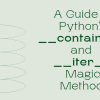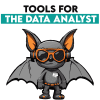Latest Posts |
|---|
|
More Recent Posts
- Meta’s New Data Analyst Professional Certification Has Dropped!
- Everything You Need to Know About MLOps: A KDnuggets Tech Brief
- Containerize Python Apps with Docker in 5 Easy Steps
- Getting Started with PyTest: Effortlessly Write and Run Tests in Python
- Avoid These 5 Common Mistakes Every Novice in AI Makes
- 3 New Prompt Engineering Resources to Check Out
- Data Science Degrees vs. Courses: The Value Verdict
- 5 MLOps Courses from Google to Level Up Your ML Workflow









